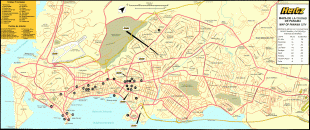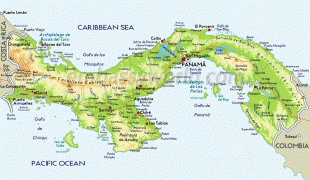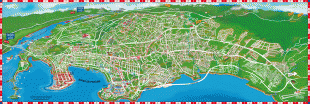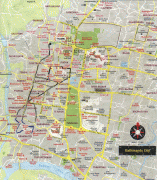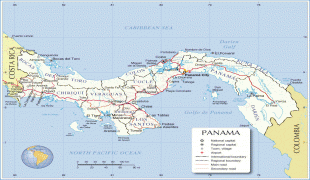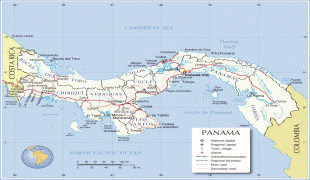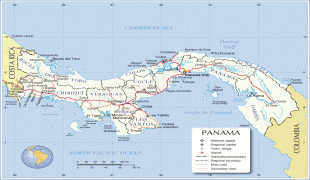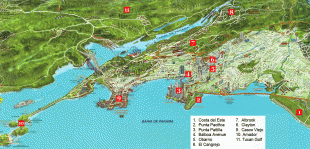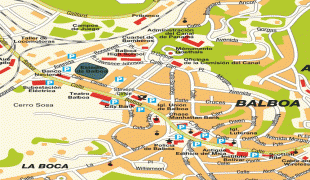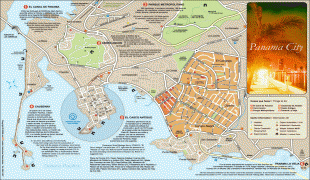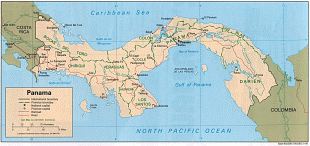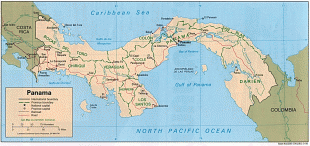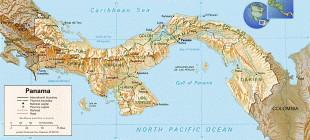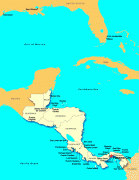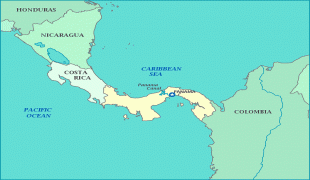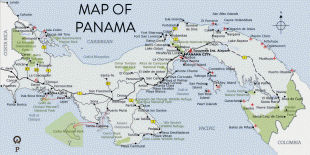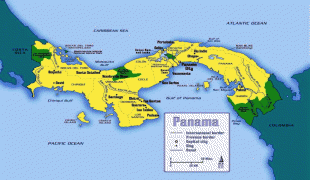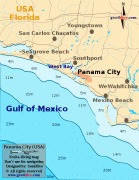Panama City (Panamá)
 |
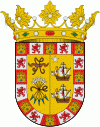 |
The city of Panama was founded on 15 August 1519, by Spanish conquistador Pedro Arias Dávila. The city was the starting point for expeditions that conquered the Inca Empire in Peru. It was a stopover point on one of the most important trade routes in the American continent, leading to the fairs of Nombre de Dios and Portobelo, through which passed most of the gold and silver that Spain mined from the Americas.
On 28 January 1671, the original city was destroyed by a fire when the privateer Henry Morgan sacked and set fire to it. The city was formally reestablished two years later on 21 January 1673, on a peninsula located 8 km from the original settlement. The site of the previously devastated city is still in ruins, and is now a popular tourist attraction, and is regularly visited by school trips.
The city was founded on 15 August 1519, by Pedro Arias de Ávila, also known as Pedrarias Dávila. Within a few years of its founding, the city became a launching point for the exploration and conquest of Peru and a transit point for gold and silver headed back to Spain through the Isthmus. In 1520, Genoese merchants controlled the port and the commerce of the region, mainly for the slave trade, thanks to a concession given by the Spaniards, who had the Republic of Genoa as its main banking base. In 1671 Henry Morgan with a band of 1400 men attacked and looted the city, which was subsequently destroyed by fire. The ruins of the old city still remain and are a popular tourist attraction known as Panamá Viejo (Old Panama). The city was rebuilt in 1673 in a new location approximately 5 mi southwest of the original city. This location is now known as the Casco Viejo (Old Quarter) of the city. Panama City is the fourth earliest-founded of the modern-day capital cities in the Americas.
One year before the start of the California Gold Rush, the Panama Railroad Company was formed, but the railroad did not begin full operation until 1855. Between 1848 and 1869, the year the first transcontinental railroad was completed in the United States, about 375,000 people crossed the isthmus from the Atlantic to the Pacific, and 225,000 in the opposite direction. This traffic greatly increased the prosperity of the city during that period.
After declaring independence from Colombia on November 3, 1903, Philippe Bunau-Varilla (a French engineer) was named Envoy Extraordinary and Minister Plenipotentiary. Bunau-Varilla negotiated the Hay-Bunau-Varilla Treaty of 1903, which provided the United States with a 10-mile-wide strip of land for the canal, a one-time $10 million payment to Panama, and an annual annuity of $250,000. The United States also agreed to guarantee the independence of Panama. Completed in 1914, the Panama Canal symbolized U.S. technological prowess and economic power. Although U.S. control of the canal eventually became an irritant to U.S.-Panamanian relations, at the time it was heralded as a major foreign policy achievement.
The construction of the Panama Canal was of great benefit to the infrastructure and economy. Of particular note are the improvements in health and sanitation brought about by the American presence in the Canal Zone. Dr. William Gorgas, the chief sanitary officer for the canal construction, had a particularly large impact. He hypothesized that diseases were spread by the abundance of mosquitos native to the area, and ordered the fumigation of homes and the cleansing of water. This led to yellow fever being eradicated by November 1905, as well malaria rates falling dramatically. However, most of the laborers for the construction of the canal were brought in from the Caribbean, which created unprecedented racial and social tensions in the city.
During World War II, construction of military bases and the presence of larger numbers of U.S. military and civilian personnel brought about unprecedented levels of prosperity to the city. Panamanians had limited access, or no access at all, to many areas in the Canal Zone neighboring the Panama city metropolitan area. Some of these areas were military bases accessible only to United States personnel. Some tensions arose between the people of Panama and the U.S. citizens living in the Panama Canal Zone. This erupted in the 9 January 1964 events, known as Martyrs' Day.
In the late 1970s through the 1980s the city of Panama became an international banking center, bringing a lot of undesirable attention as an international money-laundering locale. In 1989 after nearly a year of tension between the United States and Panama, President George H. W. Bush ordered the invasion of Panama to depose General Manuel Noriega, the country's de facto dictator. As a result, a portion of the El Chorrillo neighborhood, which consisted mostly of old wood-framed buildings dating back to the 1900s (though still a large slum area), was destroyed by fire. In 1999, the United States officially transferred control of the Panama Canal Zone to Panama, which remains in control today.
The city of Panama is still a banking center, although with very visible controls in the flow of cash. Shipping is handled through port facilities in the area of Balboa operated by the Hutchison Whampoa Company of Hong Kong and through several ports on the Caribbean side of the isthmus. Balboa, which is located within the greater Panama metropolitan area, was formerly part of the Panama Canal Zone, and the administration of the former Panama Canal Zone was headquartered there.
Map - Panama City (Panamá)
Map
Country - Panama
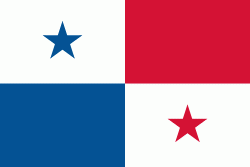 |
 |
| Flag of Panama | |
Panama was inhabited by indigenous tribes before Spanish colonists arrived in the 16th century. It broke away from Spain in 1821 and joined the Republic of Gran Colombia, a union of Nueva Granada, Ecuador, and Venezuela. After Gran Colombia dissolved in 1831, Panama and Nueva Granada eventually became the Republic of Colombia. With the backing of the United States, Panama seceded from Colombia in 1903, allowing the construction of the Panama Canal to be completed by the United States Army Corps of Engineers between 1904 and 1914. The 1977 Torrijos–Carter Treaties agreed to transfer the canal from the United States to Panama on December 31, 1999. The surrounding territory was first returned in 1979.
Currency / Language
| ISO | Currency | Symbol | Significant figures |
|---|---|---|---|
| PAB | Panamanian balboa | B/ | 2 |
| USD | United States dollar | $ | 2 |
| ISO | Language |
|---|---|
| EN | English language |
| ES | Spanish language |






